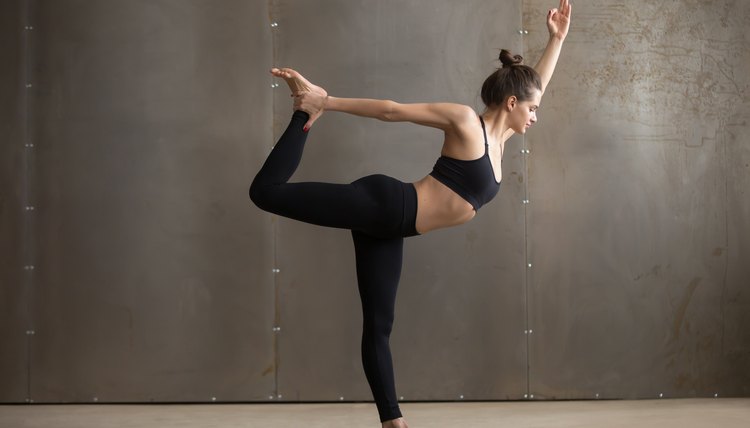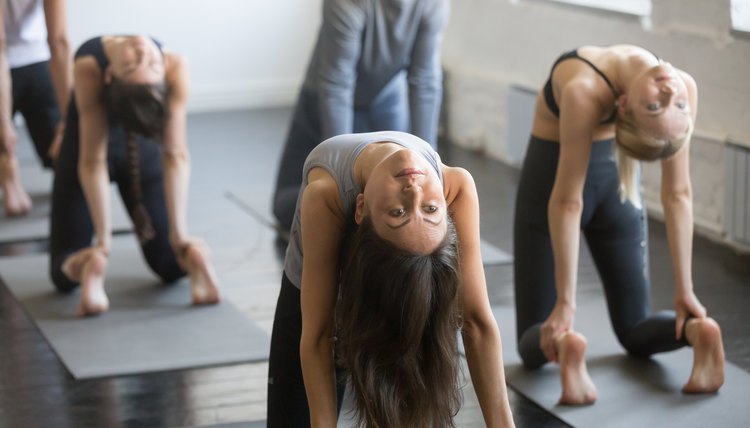Does Hot Yoga Provide a Cardio Workout?

Hot yoga is a workout for extremists. It's done in a room heated to 92 degrees — or higher, such in the case of Bikram Yoga, which calls for a 105 degree room — at a high humidity, with a class lasting anywhere from 60 to 90 minutes.
It might be hard, but hot yoga can help improve strength, flexibility and balance, while helping decrease your risk of conditions such as diabetes and heart disease. Despite the many benefits of hot yoga, it should only be part of your cardio routine, not the only type of aerobic activity that you do.
Aerobic Benefits
Hot yoga, along with power yoga, moves quickly from one pose to the next, giving you a more rigorous workout than traditional Hatha yoga. According to the American Council on Exercise, such intense forms of yoga only provide a mild aerobic benefit.
The best way to gauge whether your yoga session is giving you an aerobic workout is to take your heart rate. Calculate your maximum heart rate by subtracting your age from 220. If your heart rate during a yoga session stays between 60 and 80 percent of your maximum heart rate, you'll reap cardiovascular benefits.
Hot Yoga Misconceptions
Many exercisers turn to hot yoga instead of cardio exercise under the misguided belief that the intense heat and profuse sweating will help burn fat. Heat and humidity may cause sweating, but they do nothing to eliminate fat from your body. If you notice a drop in your weight after a hot yoga session, you're probably seeing a water weight loss, and you'll gain it back once you replenish the fluids lost during exercise.
The only way to drop fat is by burning more calories than you eat, and while hot yoga does burn calories to boost your deficit, it's not a miracle fat-loss solution or a substitute for regular aerobic exercise.

Does Hot Yoga Provide a Cardio Workout?
Safety Considerations
Hot yoga raises health concerns that are not typically an issue with other forms of yoga. The extreme heat and humidity can raise your internal temperature and stress your body's ability to cool itself.
To prevent dehydration and prepare your body for practice, always drink plenty of fluids at regular intervals before your class and throughout the yoga session. If you've never done hot yoga before, ease yourself into it by performing aerobic exercise in a hotter-than-normal environment first, gradually adding time to your sessions.
References
Writer Bio
Lydia Stephens began writing professionally in 2009. She has written online for Nile Guides, SheKnows.com and various other websites and has been published in "Stringing Magazine" and "Xiamen Wave." Stephens played competitive soccer for 19 years, has been weight lifting since 2007 and enjoys running, biking and sailing. She has a Bachelor of Arts in philosophy from the University of Texas.
